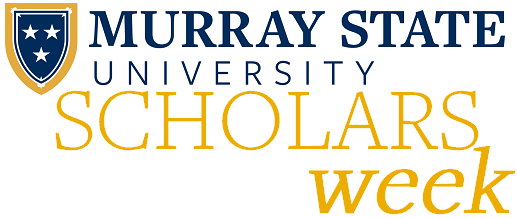
Honors Theses: Astronomy & Physics
Subscribe to RSS Feed (Opens in New Window)
| 2016 | ||
| Thursday, April 21st | ||
| 10:00 AM |
Extension of a Perturbation Analysis in Search of Exomoons in Planet-Pulsar Systems Caleb Hughes, Murray State University Barkley Room, Curris Center 10:00 AM - 11:00 AM Perturbation theory studies the effect of small parameters on a given equation. Applied to orbital mechanics, these minute changes can be measured and used to detect changes in periodic phenomena. One such periodic phenomena is the time of arrival (TOA) of regularly detectable pulses from a pulsar, a rapidly rotating star. Perturbations can be modeled theoretically and then matched with experimental data in order to discern if it is likely that a given planet-pulsar system has an exomoon. The original mathematical analysis of this phenomenon was conducted out to order O(ε2) and found that, for the case of a theoretical Jupiter-Jupiter system, a perturbation of 960 ns would occur. Our analysis expands the Maclaurin Series of the perturbed problem to order O(ε3) and for the same system determines an additional perturbation of 46 ns, indicating an improved threshold for detectability of the exomoon. Computational software was also used to explore a general form for the terms of order ε4 and higher to explore the limits of a useful approximation. |
|
|---|---|---|
| 10:00 AM |
Noise Exposure aboard Nuclear-Powered Aircraft Carriers Justin D. Bryant, Murray State University Barkley Room, Curris Center 10:00 AM - 11:00 AM United States nuclear-powered aircraft carriers have a highly structured schedule that involves recurring periods of training, deployment, and maintenance. Noise-induced hearing loss (NIHL) is a significant problem among Sailors aboard these carriers due to the nature of ongoing shipboard operations and extended periods of noise exposure. This study aims to characterize Sailors’ occupational noise exposure during the carrier’s training and maintenance periods. Significant overexposures were recorded throughout this study. Flight operations contributed significantly to noise dose during the training and readiness phase. Rehabilitation work involving the use of needle-guns was a significant contributor to the excessive noise doses during maintenance phase. The Navy should use the results of this study to better understand and control Sailors’ occupational noise exposure. |
|

